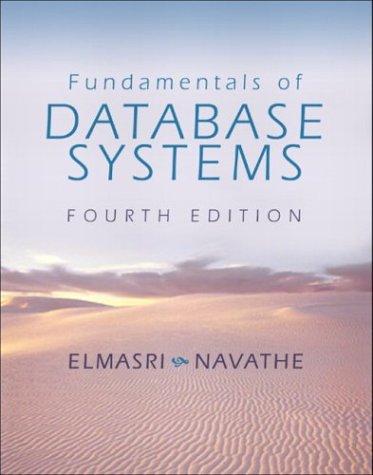Question
Suppose we try to use BGPs strategy of exchanging destinations plus paths as an interior routing update strategy, perhaps replacing distance-vector routing. No costs or
Suppose we try to use BGPs strategy of exchanging destinations plus paths as an interior routing update strategy, perhaps replacing distance-vector routing. No costs or hop-counts are used, but routers attach to each destination a list of the routers used to reach that destination. Routers can also have route preferences, such as prefer my link to B whenever possible.
(a). Consider the network of 9.2 Distance-Vector Slow-Convergence Problem: D--------------A-----------B The DA link breaks, and B offers A what it thinks is its own route to D. Explain how exchanging path information prevents a routing loop here.
(b). Suppose the network is as below, and initially each router knows about itself and its immediately adjacent neighbors. What sequence of router announcements can lead to A reaching F via A->D->E->B->C->F, and what individual router preferences would be necessary? (Initially, for example, A would reach B directly; what preference might make it prefer A->D->E->B?) A------------B-----------C - - - D------------E----------F (c). Explain why this method is equivalent to using the hop count metric with either distance-vector or link-state routing, if routers are not allowed to have preferences and if the router-path length is used as a tie-breaker.
Step by Step Solution
There are 3 Steps involved in it
Step: 1

Get Instant Access to Expert-Tailored Solutions
See step-by-step solutions with expert insights and AI powered tools for academic success
Step: 2

Step: 3

Ace Your Homework with AI
Get the answers you need in no time with our AI-driven, step-by-step assistance
Get Started


